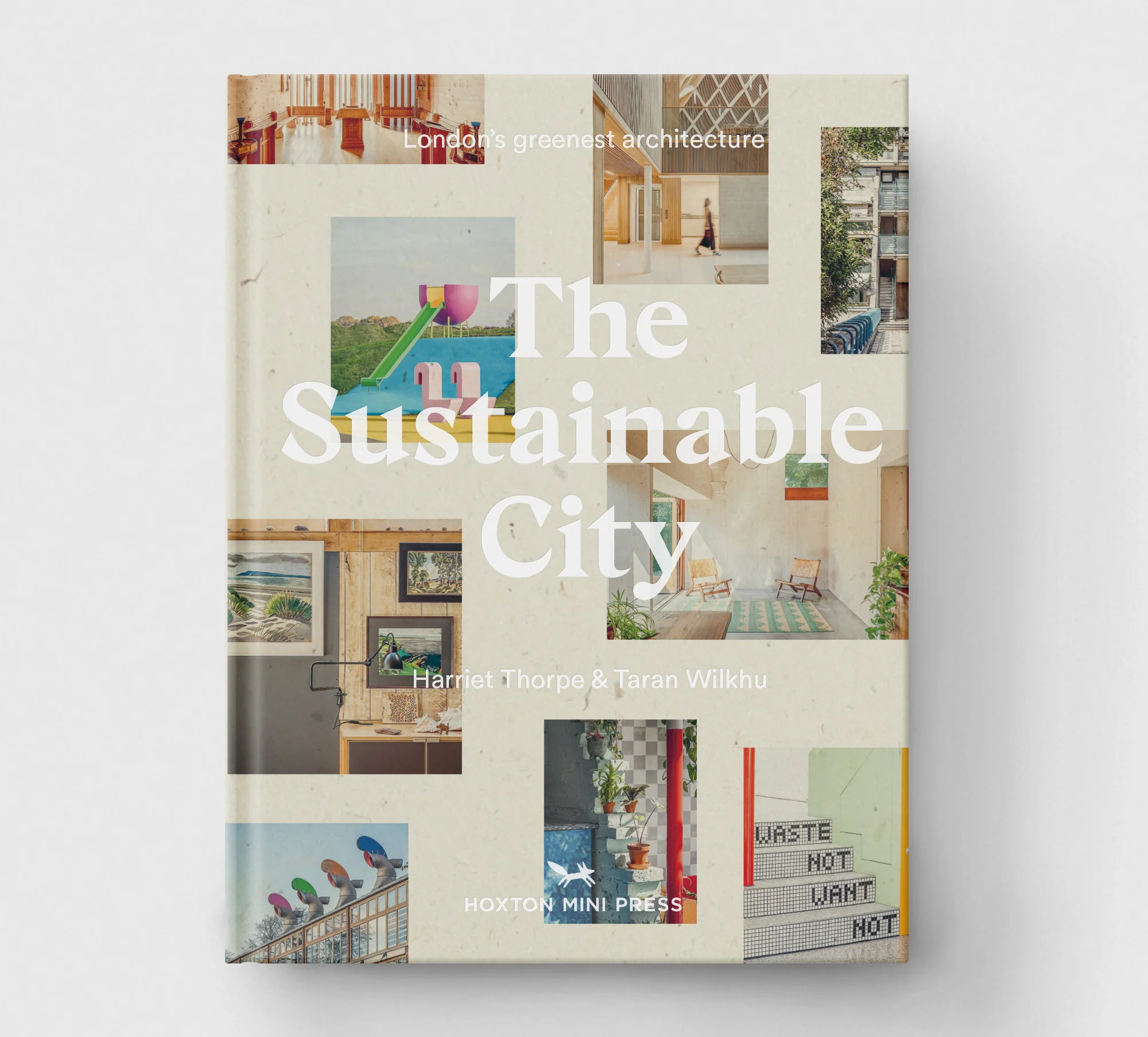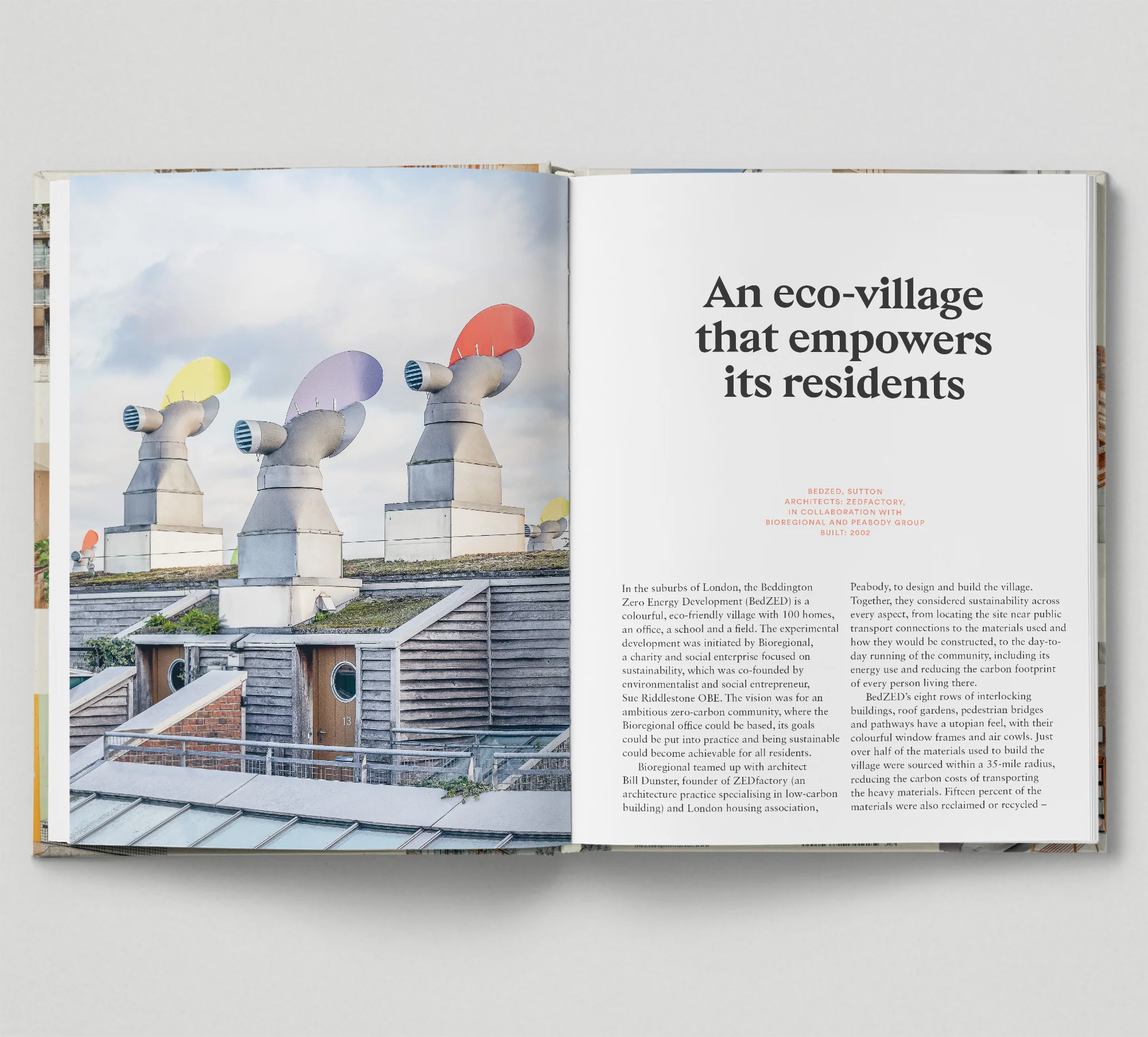A new book by journalist Harriet Thorpe and photographer Taran Wilkhu uncovers how London is responding to the urgent need to build with the environment
 Photography courtesy of Hoxton Mini Press
Photography courtesy of Hoxton Mini Press
ICON: What inspired you to write The Sustainable City?
Harriet Thorpe: The Sustainable City was born out of a conversation between myself and photographer Taran Wilkhu. We shared the opinion that when it came to the communication of sustainable architecture in London, people were often left out of the stories.
We wanted to find a way to communicate positive, vibrant and human stories around sustainable architecture and design in London, whilst also exploring big topics from Passivhaus and retrofit in an accessible way – a mission that was supported by publisher Hoxton Mini Press, whose uplifting photography-led books cover many topics and reach wide audiences.
ICON: From experimental homes to pioneering timber structures, Sustainable City shares over 30 projects by London architects, designers and residents. Can you share how the projects were selected for the book?
HT: It was our aim to show the widest possible variety of purposes, design techniques and people – it was an extremely tough selection process! In the book you’ll find houses, flats, offices, playgrounds, schools, a place of worship, a hotel, a theatre, community centres, even a waste-to-energy plant and more.
On top of that we wanted to show a broad spectrum of sustainable architecture – from highlighting the growing use (and elegant artful application) of timber for structure and space; clever Passivhaus engineering that reduces energy use down to a minimal amount; innovative retrofits re-using structures and materials; and projects that embraced landscaping to rebuild biodiversity in the city.
 Photography by Taran Wilkhu and courtesy of Hoxton Mini Press
Photography by Taran Wilkhu and courtesy of Hoxton Mini Press
Then, on top of that, we made sure every project was socially sustainable – that it had positive benefits to the lives of urban dwellers who inhabit and interact with that building or place, social knock- on effects from boosting wellbeing, aiding bicycle commutes, or cutting electricity bills. Our process resulted in the presentation of many multi-tasking sustainable buildings with fascinating stories and people behind them.
ICON: What do you think the book says about good architecture?
HT: The book shows that there are a lot of architects and designers in London striving to make the city a more sustainable and happier place to live – they each have unique takes on creating a better city often led by the varied contexts across the capital that they’re working on, but they’re all working towards the same thing, and joining all these voices and ideas together is creating a better city.
I think the book shows that good architecture is architecture that is designed for – and importantly goes out of its way to benefit – the long-term wellbeing of people and the planet. At this early 21st century moment, a moment of environmental crisis and urgency, this sense of agency for ‘good’ in architecture and design is imperative.
 Photography by Taran Wilkhu
Photography by Taran Wilkhu
ICON: Can you share the challenges and possibilities future cities are facing?
HT: Most of us live in cities – just over half the world’s population – and urban living is on a steady climb. Across the globe cities must deal with population growth. Density is a good thing, because it’s important to keep the countryside green.
When done correctly, dense cities are incredibly exciting places to be, they encourage shared opportunities, social connections and more efficient use of resources that take a toll on our environment: from transport, to food, to heating.
Yet, the challenge is growing in a sustainable way – unsustainable growth is leading to more slums, pollution, and decreasing life expectancy. The challenge therefore is (and perhaps always has been) providing safe resources, good services and affordable housing to a growing population, yet at this moment of climate emergency, it is about doing it in a way that also helps repair the health of our Earth. The possibility is our sustainable existence on this earth.
The Sustainable City by Harriet Thorpe and Taran Wilkhu is published by Hoxton Mini Press (hoxtonminipress.com)
Get a curated collection of design and architecture news in your inbox by signing up to our ICON Weekly newsletter















